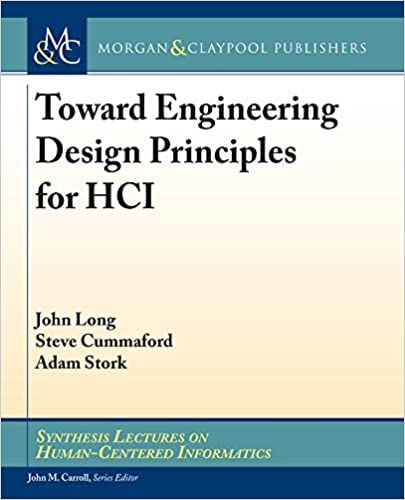
English | 2022 | ISBN: 1636393527, 978-1636393506 | 234 pages | True PDF | 11.69 MB
This is the second of two books by the authors about engineering design principles for human-computer interaction (HCI-EDPs) . The books report research that takes an HCI engineering discipline approach to acquiring initial such principles. Together, they identify best-practice HCI design knowledge for acquiring HCI-EDPs. This book specifically reports two case studies of the acquisition of initial such principles in the domains of domestic energy planning and control and business-to-consumer electronic commerce. The book begins by summarising the earlier volume, sufficient for readers to understand the case studies reported in full here.
The themes, concepts, and ideas developed in both books concern HCI design knowledge, a critique thereof, and the related challenge. The latter is expressed as the need for HCI design knowledge to increase its fitness-for-purpose to support HCI design practice more effectively. HCI-EDPs are proposed here as one response to that challenge, and the book presents case studies of the acquisition of initial HCI-EDPs, including an introduction; two development cycles; and presentation and assessment for each. Carry forward of the HCI-EDP progress is also identified.
The book adopts a discipline approach framework for HCI and an HCI engineering discipline framework for HCI-EDPs. These approaches afford design knowledge that supports "specify then implement" design practices. Acquisition of the initial EDPs apply current best-practice design knowledge in the form of "specify, implement, test, and iterate" design practices. This can be used similarly to acquire new HCI-EDPs. Strategies for developing HCI-EDPs are proposed together with conceptions of human-computer systems, required for conceptualisation and operationalisation of their associated design problems and design solutions.
This book is primarily for postgraduate students and young researchers wishing to develop further the idea of HCI-EDPs and other more reliable HCI design knowledge. It is structured to support both the understanding and the operationalisation of HCI-EDPs, as required for their acquisition, their long-term potential contribution to HCI design knowledge, and their ultimate application to design practice.



